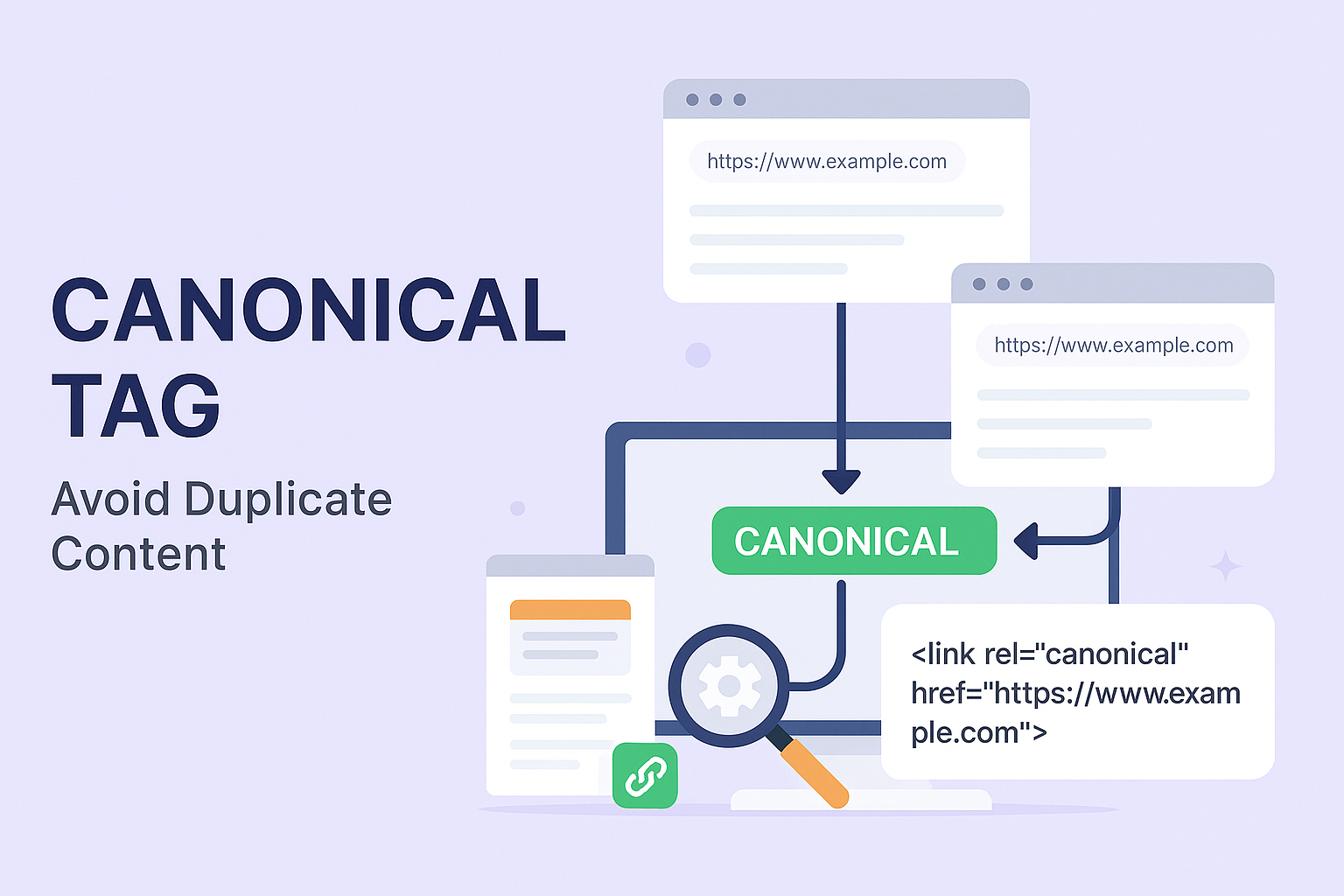The Power of Canonical Tags in Modern SEO

Search engines have evolved tremendously over the past decade. We’ve moved from simple keyword matching to complex semantic search and entity understanding. Yet amidst all this innovation, one technical SEO tool remains as crucial today as ever: the canonical tag.
If you’re serious about protecting your rankings, avoiding duplicate content issues, and consolidating your site’s authority, mastering canonical tags is non-negotiable.
In this article, we’ll explore:
What canonical tags are
Why they’re critical for modern SEO
Common scenarios where they’re needed
How to implement them properly
Mistakes to avoid
Best practices for 2025 and beyond
Let’s dive deep into the power of canonical tags in modern SEO.
🔍 What Are Canonical Tags?
A canonical tag is a piece of HTML code placed in the <head> section of a web page. It looks like this:
<link rel="canonical" href="https://www.example.com/preferred-page/" />Why Canonical Tags Matter in Modern SEO
1. Prevent Duplicate Content Issues
Duplicate content happens more often than people think. Even small variations in URLs can cause Google to see multiple pages as duplicates, splitting your SEO equity.
Examples:
example.com/page
example.com/page/
example.com/page?utm_source=facebook
Without canonical tags, search engines may:
Split ranking signals between pages
Pick the wrong version to index
Lower your rankings due to perceived duplicate content
2. Consolidate Link Equity
Imagine this scenario:
Page A has 10 backlinks.
Page B (a duplicate) has 5 backlinks.
Without canonical tags, Google may treat these as separate pages—each weaker in authority.
A canonical tag consolidates those signals, ensuring all backlinks boost the same preferred page.
3. Improve Crawl Efficiency
Search engines allocate a finite crawl budget for each website. If bots waste time crawling duplicate URLs, fewer resources are left for your fresh content.
Canonical tags guide bots efficiently through your site, helping them spend time where it matters most.
4. Manage URL Parameters
UTM tags, session IDs, filters, and sort parameters often create duplicate URLs. Canonical tags ensure Google recognizes them as the same content.
Example:
Canonical URL: https://example.com/product/red-shoes
Duplicate URLs:
https://example.com/product/red-shoes?utm_source=newsletter
https://example.com/product/red-shoes?sort=price_asc
5. Maintain Consistent Ranking Signals
Canonical tags ensure your content consistently ranks under the URL you choose, helping avoid drops in rankings if Google accidentally indexes an unintended duplicate page.
When Should You Use Canonical Tags?
Here’s where canonical tags shine:
Multiple Access Points
Your page might be accessible from:
www vs. non-www
http vs. https
With or without trailing slashes
Example:
https://example.com/page
http://example.com/page/
Content Syndication
Publishing your blog on Medium, LinkedIn, or other platforms? Add a canonical tag pointing to your original post to protect your rankings.
Sorting & Filtering Pages
E-commerce sites often create multiple versions of a product category based on filters. Canonical tags point back to the main category page.
Pagination
Sometimes sites canonicalize paginated series to the first page. However, this is controversial—Google recommends using rel=prev/next (deprecated now) or simply letting each page index separately unless pages are truly identical.
Product Variants
Example: color variants of a single product. Canonical tags can consolidate rankings to one main product page.
How to Implement Canonical Tags
Manual Method
Add the canonical tag directly into your page’s HTML <head> section.
Example:
<link rel="canonical" href="https://www.example.com/page/" />CMS Plugins
Most modern CMSs (WordPress, Shopify, etc.) have built-in tools or plugins:
Yoast SEO
Rank Math
All in One SEO
Dynamic Implementation
For large sites, canonical tags often need to be dynamic.
Example: In Next.js
import Head from 'next/head';
<Head>
<link rel="canonical" href={`https://www.example.com${router.asPath}`} />
</Head>This ensures each URL has its correct canonical tag automatically.
🚫 Common Canonical Tag Mistakes
Despite their simplicity, canonical tags are frequently misused.
Mistake #1: Self-Referencing Canonicals Missing
Every page should have a canonical—even if it’s pointing to itself. Omitting it leaves Google guessing.
Mistake #2: Canonicalizing to Irrelevant Pages
Don’t point unrelated pages to a single URL to “boost authority.” It confuses Google and can lower rankings.
Mistake #3: Conflicting Signals
If your canonical tag points to URL A, but your sitemap lists URL B as canonical, Google may get mixed signals. Be consistent.
Mistake #4: Canonical Chains
Avoid multiple redirects or chains like:
Page A canonicals to Page B
Page B canonicals to Page C
Always point directly to the final preferred URL.
Best Practices for Canonical Tags
Here’s how to stay safe:
✔ Always use absolute URLs in canonical tags (e.g., https://www.example.com/page)
✔ Ensure canonical URLs return a 200 OK status
✔ Canonicalize to the version you want indexed and ranked
✔ Keep your canonical tags consistent with your sitemap
✔ Regularly audit your site for duplicate content issues
How to Check Canonical Tags
Use tools like:
Google Search Console’s “Inspect URL”
Screaming Frog SEO Spider
Ahrefs Site Audit
Sitebulb
These tools help spot:
Missing canonicals
Incorrect references
Non-indexable canonical URLs
Canonical Tags and Modern SEO Trends
Canonical tags remain crucial as SEO becomes more sophisticated:
AI & Semantic Search
AI-driven engines still rely on clear signals to identify the authoritative version of content.
Entity-Based SEO
Consolidated pages help build topical authority for your brand.
Core Web Vitals
Fewer duplicate pages = fewer resources wasted = better site performance.